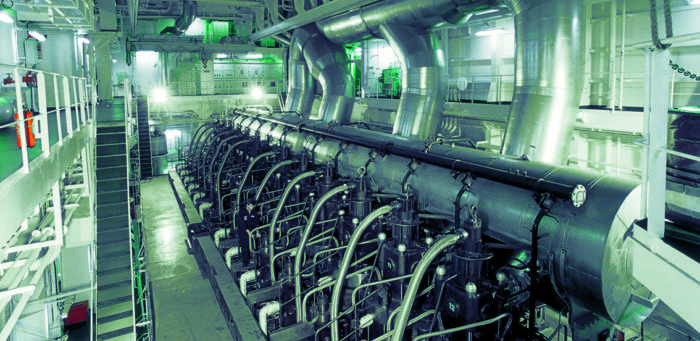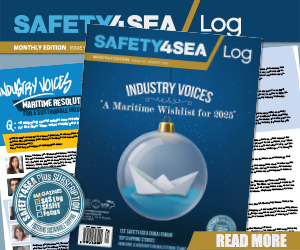The Nautical Institute has issued Mars Report referring to an incident in which sea water entered in an uncontrolled manner and overflowed into the engine room of a bulk carrier while entering ice-infested waters.
In preparation, the engineering staff completed an ice navigation checklist and, among other things, opened the steam valve to the lower sea chest as they thought this would prevent ice build-up.
During the night, the electrical officer of the watch (EOW) noticed a rise in temperature in the fresh water cooling system. He called the chief engineer, who attributed the rise in temperature to an ice blockage in the low sea chest suction. Arrangements were made to use water from the forepeak ballast tank to lower the cooling water temperature.
To clear the ice, engine staff unbolted the cover of the housing containing the low sea water strainer. As the crew were working they noticed water beginning to overflow from the sea water strainer housing. They attempted to tighten the valve by hand but were unable to do so; a pry bar was then used but the valve operating mechanism failed. Hydrostatic pressure forced the valve disc and valve operating mechanism upwards, allowing sea water to enter in an uncontrolled manner and overflow into the engine room.
Multiple attempts to secure the cover on the sea water strainer housing were made but were unsuccessful. Within approximately ten minutes, the water in the engine room was nearly 4m deep and had reached the level of the grating deck. After electrical sparks were seen, the Master ordered that the vessel be blacked out and the engine room evacuated.
Soon afterwards, the crew were mustered on the upper deck and briefed on the situation. The emergency generator was started and put on line and the crew readied for possible abandonment. The vessel drifted and, despite having anchors down and a rescue tug on scene, touched some shoals before it could be towed to safety.
The hull sustained tears, punctures and dents. The engine room machinery and electrical components located below the flooded waterline were all rendered inoperable.
This Mars Report is edited from official Transportation Safety Board of Canada report M14A0051 . Some of the findings and analysis of the official report were as follows:
- Warmed sea water from the heat exchanger was being both discharged overboard and returned to the pump, rather than being recirculated into the low sea chest. As a result, the sea water strainer became plugged with ice and slush, causing the vessel to lose sea water suction from the low sea chest.
- Without a working indicator, the crew had no visual means to confirm that the low sea chest valve was fully closed.
- The brass and steel collars around the valve stem, which were poorly fitted, separated when the low sea chest valve operating mechanism was overstressed while being tightened.
If crew are not familiar with the measures necessary to prepare and operate a vessel’s sea water cooling system when navigating in ice, there is a risk that the main engine will overheat, leading to a loss of propulsion. There were indications that the crew were not adequately familiarised with the cooling system, nor had they properly prepared the cooling system for operating in ice-covered waters.
For example:
- The crew inaccurately identified the type of sea water cooling system on board the vessel when initially required to provide this information to authorities;
- The warmed sea water leaving the various main engine heat exchangers was not being recirculated to the low sea chest to melt ice; and
- The steam valve to the low sea chest had been opened to prevent the build-up of ice and slush, despite indications in documentation from local authorities that this is ineffective.
Source: The Nautical Insitute/ Mars Reports





























































